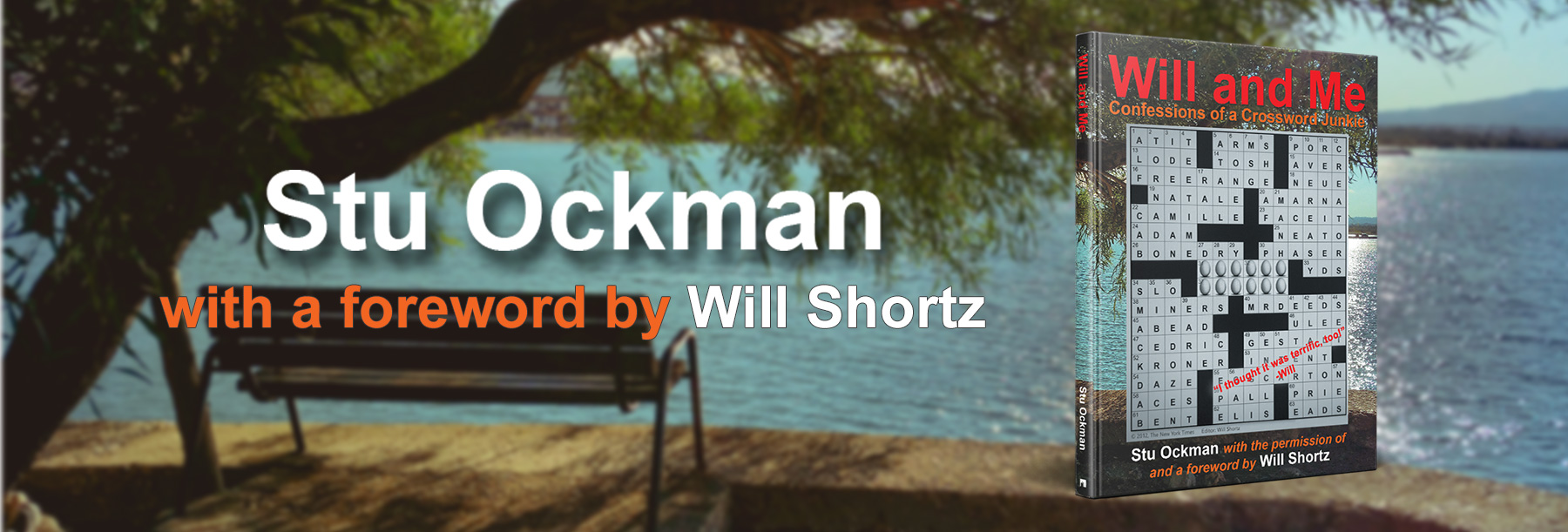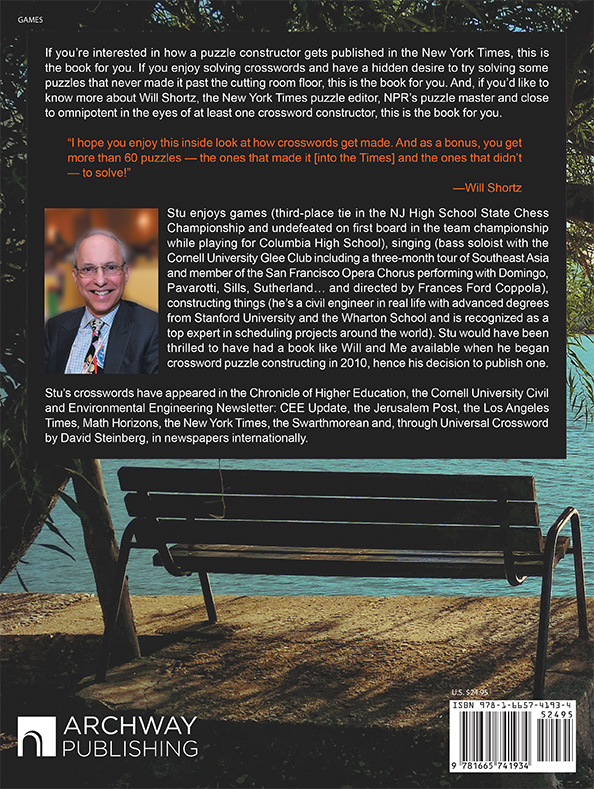Home
Will and Me
Editors and contributors tend to develop close, mutually beneficial relationships over time, no matter what kind of material is involved, and that is certainly true of Stu Ockman and me.
Stu started contributing crosswords to The New York Times in 2010. Over the next few years, he had 13 puzzles published in the paper. That is a pretty impressive feat. Overall, less than 5% of submissions are accepted, and fewer than 200 people in the time that I’ve been the editor have had this degree of success.
Uniquely, as far as I know, Stu saved every draft of every puzzle he ever submitted to me, as well as every piece of correspondence between us — all of which he has carefully compiled for this volume.
The result is a behind-the-scenes look at how The New York Times crossword is made, from both sides. It says a lot about Stu’s persistence, as he had 11 rejections before his first acceptance. In addition, some of his puzzles went through many revisions before he finally got a yes. You can read every bit of back-and-forth along the way.
In retrospect, if I’d known that Stu was going to collect all my emails in a book, I might have been a better correspondent. Sometimes I was a little curt or slow to answer. But this is how the process works, and my critiques of Stu’s puzzles, pro and con, still strike me as correct.

A few notes:
When I started at The Times in 1993, crossword submissions were sent by postal mail, and all replies were written by me personally. By 2010, when Stu started, submissions still came by U.S. mail, but I generally replied by email. This speeded up and simplified the process in one direction. Also, because the volume of submissions had increased so much in the intervening years, by 2010 I was getting help in answering submissions — often by Paula Gamache, a noted crossword constructor in her own right. I would write notes on the envelopes that the submissions came in. She would incorporate those into responses to the contributors.
For the record, the process has changed yet again in recent years. Now submissions are sent digitally to The Times, where they’re screened by a group of my colleagues before they get to me. But no matter who’s writing, the correspondence between the contributor and the editor is much the same.
I hope you enjoy this inside look at how crosswords get made. And as a bonus, you get more than 60 puzzles — the ones that made it and the ones that didn’t — to solve!
–Will Shortz



